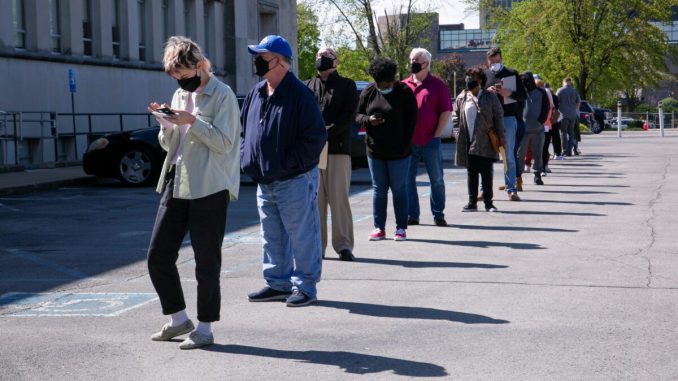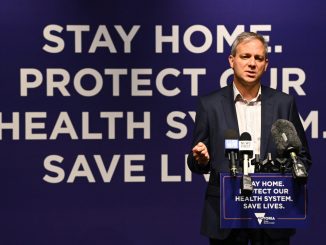

WASHINGTON—U.S. economic growth accelerated in the first quarter setting the course for what is expected will be the strongest performance this year in nearly four decades.
Gross domestic product increased at a 6.4 percent annualized rate last quarter, the Commerce Department said on Thursday in its advance estimate of GDP for the first three months of the year. That was the second-fastest GDP growth pace since the third quarter of 2003 and followed a 4.3 percent rate in the fourth quarter.
Economists polled by Reuters had forecast GDP growth increasing at a 6.1 percent pace in the January-March period.
The United States’ economy is rebounding more quickly compared to its global rivals, thanks to easing anxiety over the pandemic, which has boosted domestic demand and allowed services businesses like restaurants and bars to reopen.
Still, the economy remains at least a couple of years away from fully recovering from the pandemic recession, which started in February 2020.
Former President Donald Trump’s government provided nearly $3 trillion in relief money early in the pandemic, leading to record GDP growth in the third quarter of last year.
That was followed by nearly $900 billion in additional stimulus in late December. President Joe Biden’s administration offered another $1.9 trillion rescue package in March, which sent one-time $1,400 checks to qualified households and extended a $300 unemployment subsidy through early September.
The Federal Reserve on Wednesday acknowledged the burgeoning domestic activity, but the U.S. central bank gave no sign it was ready to reduce its extraordinary support for the recovery.
The rapidly accelerating economy could dampen enthusiasm among some moderate Democrats for Biden’s socialist economic agenda. Biden on Wednesday unveiled a sweeping $1.8 trillion package for families and education in his first joint speech to Congress. Republicans oppose more stimulus, now worried about swelling debt. “In his first 100 days, the President has proposed $6 trillion in new spending—about 4x our total federal budget!” Sen. Mitt Romney (R-Utah) wrote.
There are concerns among some economists that the massive government funding could ignite inflation. Many economists, including Fed Chair Jerome Powell expect higher inflation will be transitory, arguing that the labor market remains 8.4 million jobs below its peak in February 2020.
A separate report from the Labor Department on Thursday showed 553,000 people filed for state unemployment benefits during the week ended April 24, compared to 566,000 in the prior period.
Though initial jobless claims have dropped from a record 6.149 million in early April 2020, they remain well above the 200,000 to 250,000 range viewed as consistent with a healthy labor market.
The economy continued to power ahead early in the second quarter, with consumer spending vaulting to a 14-month high in April. Americans have accumulated at least $2 trillion in excess savings.
Many economists expect the economy will fully recover from the recession in late 2023. They forecast growth this year could top 7 percent, which would be the fastest since 1984. The economy contracted 3.5 percent in 2020, the worst performance in 74 years.
By Lucia Mutikani





Be the first to comment